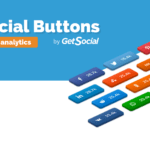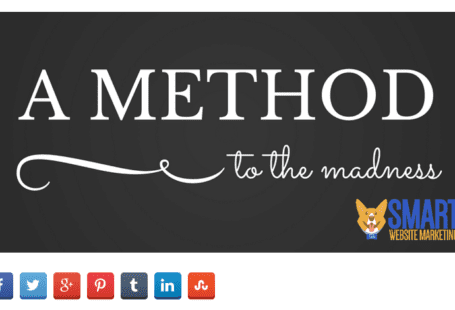Focusing on vanity metrics is an addiction that is strongly resisting termination. Social Media Marketing is one of the areas most affected by this blight. For many businesses and organizations, vanity metrics are the bread and butter of their social efforts (and maybe their goals).
I’ve seen it all:
-
- Multi-billion dollar corporations focusing on counting shares;
-
- Publishers trying to understand how many new Twitter followers they added since last year (this one is tricky: use the Wayback Machine);
- Websites ranking number 1 in their category with 3+ million followers and 100 likes on each post or 0.00003% engagement rate (that’s just mean, Facebook).
Trying to understand why this nonsense keeps happening, I stumbled on a very interesting LinkedIn post about outdated strategies, smart expenditure, and relationship building.
And, above all, about connecting marketing/advertising efforts to business results.
On that day, I stumbled on Joah Santos, Chief Creative Officer and founder of NYLON. NYLON is a bit different, and you can learn that quickly just by checking their website.

I couldn’t miss this opportunity, so I invited Joah to have a small chat with us.
Hugo Monteiro: Hi Joah, thank you very much for setting some time aside for this interview.
In a 2016 article, you mention that NYLON distinguishes itself from other agencies by focusing on connecting campaigns to the financial results they generate, instead of delivering a more traditional approach that just wants to achieve the maximum reach possible.
Besides this, which other values or ideas differentiate your agency from the rest?
Joah Santos: An agency will spend 250,000€ on big global pitches. They dig deep for uncovering a human truth to build a campaign from and present during the pitch. We know this is not possible for the majority of brands, so we developed a process that we work on with clients to get the same type of answers.
HM: Regarding digital campaigns, there is something distinctively different in how NYLON approaches social media marketing? And content marketing?
JS: We tell a consistent story. We don’t take hot topics unless it relates to the brand, we don’t use the typical holiday calendar. We tell the same 3 messages 100s of different ways to make it clear what the brand is and does. We never do the “laughs for likes” type posts, unless of course, it is a post for PSP (Portuguese Police). The PSP needs to make people laugh because police are seen as being very serious and distant from the average person. Telling a joke breaks the ice and makes the police more approachable. It changes the behavior of people and how they deal with the police. There is always a motive for the posts beyond the engagement.
HM: When we talk with marketing professionals, it’s rather common to hear that their objective is to report to their clients or managers the number of shares or likes their social posts had, instead of understanding the traffic, leads and sales those activities generated.
Why are companies still concerned with vanity metrics? Do you think measuring the ROI of social media is so complex that professionals end up accepting these superficial KPIs?
JS: A “like” is the same as a virtual hug. When we get a like, our brain releases a pleasure chemical, similar to sex, drugs, and alcohol, called dopamine. Facebook has made us addicted to dopamine. Our mood is happy when we post things that get lots of likes and sad when it doesn’t get likes.
We are addicted to these KPIs because they make us feel good even though Brad Smallwood, VP of Measurement and Insights at Facebook, has stated that they have found no relevant connection to increases in sales or even brand sentiment.
I always say: show me if your User Generated Content is communicating your brand message and if it is growing and I’ll tell you how healthy your social media is.
HM: In some of your old posts and interviews, you mention that many companies are focusing on executing their campaigns, but don’t make the extra effort of measuring them and understanding what works.
What initiatives can be made by agencies such as NYLON and startups such as GetSocial to better inform professionals and counter the status quo?
JS: I pretend my parents own stock in that company. That makes me care where and how the marketing budget was invested, it makes me research and see what people are saying and how they are reacting. It makes me ask the Uber driver if he knows the brand and how it makes him feel.
I have a very clear sense that many of these companies have people’s retirement money invested in them and this affects me greatly. I want them to be happy.
HM: At GetSocial, we work a lot with publishers and content-driven companies and, sometimes, their content marketing efforts don’t have a short-term return.
When it’s not possible to measure sales directly, or they simply don’t exist (some publishers rely only on advertising revenue from pageviews), what other metrics should be prioritized?
JS: Brand love. Do more people love your brand today than they did yesterday? That is the question we ask ourselves when we think of posts that are not tied to sales. Brand love creates loyalty, which increases market share.
HM: In a 2015 article, you highlighted the fact that brands were making, in average, 45 social posts a month and that was simultaneously harmful and unsustainable.
With all the recent and constant changes to news feed algorithms from Facebook, Instagram, etc., that are punishing “spammers”, which is the best approach to understanding what should be published?
JS: It has to be one of three things: your purpose, your Unique Selling Proposition or values linked to your “tribe”. Each one of those must be original content that will impact your core segment, which is impossible to do if you are creating 45 posts a month.
HM: From my research, NYLON works mostly with big consumer brands. When you have the opportunity to work with B2B (or publishers, which is our case), would your approach to campaigns be different? If so, what would change?
JS: We do work with a few B2B companies in the USA. Brand love is even more important because to survive you need these people to love your brand. In 18 months you will have a competitor that will offer what you offer or even better. If the B2B client doesn’t love you, he will move much quicker.
Blackberry was the best business phone ever made, it won business people on the features. iPhone was inferior but people loved the brand. We all know the end of that story.
HM: To wrap up the interview, which main trends will influence digital campaigns in the near future?
JS: Everyone now has a hot new keyword that even I use at times, RELEVANCE. At Nylon, we’re trying not be relevant but to be personal. It isn’t possible today, but we are working with AI so we can make a message personal to you. We are doing tests with that now but it might be some time before it is ready.
Interested in knowing more about Dark Social & Analytics?
[su_button url="https://getsocial.io" target="_blank" style="flat" background="#21D2B5" color="#ffffff" size="7" wide="no" center="yes" radius="auto" icon="" icon_color="#FFFFFF" text_shadow="none" desc="" onclick="" rel="" title="" id="" class=""]SIGN UP FOR FREE[/su_button]





